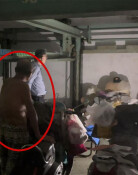[Editorial] It`s Time to Iron Out Disputes over Saemangum
[Editorial] It`s Time to Iron Out Disputes over Saemangum
Posted January. 29, 2004 22:35,
The Saemangum land reclamation project can now be resumed as the Court of Appeal dismissed the previous ruling on the project that temporarily suspended the project over the past six months. It is true that the temporary suspension created a big confusion over the state project which had been carried out for 13 years, completing 91.1 percent of the seawall building work; a 30.3-kilometer sea dike was completed out of the 33-kilometer planned sea dike.
Seoul High Court`s pragmatic judgment will help ease the confusion created by the courts previous order to suspend the project. The appellate court said that it is difficult to determine the extent of environmental damages caused by the project and that the suspension of the project is feared to cause greater damages. I believe the court made a rational decision. If the project is stopped at this stage, as the sea dikes continue to deteriorate and are even feared to collapse, the suspension will bring natural disasters, as well as extremely high expenses for reinforcement works.
Environment groups which led the lawsuit must now cooperate in order to finish the Saemangum project with minimal environmental damages. Environmental groups should not disturb the project as they are the ones that asked the court to give judgment. If the project is something that may harm the environment, they should have raised their voices when the draft bill for the project was deliberated at the Assembly. They should stop protesting against large national projects like the Gyeongbu high speed rail work, the Seoul expressway work, and the Saemangum project when they are about to be finished.
The Ministry of Agriculture and Forestry and North Jeolla Province should now think what they will do with the to-be-reclaimed land which will be about 140 times bigger than Yeoido. The Saemangum project was initiated with an aim to secure enough land to produce a large amount of rice. But these days Korea is producing more than enough rice and has to increase the amount of rice to import, according to the regulations of the World Trade Organization. Now is the time to minimize environmental damages in completing the Saemangum project, and to establish proper plans to utilize the vast land.







